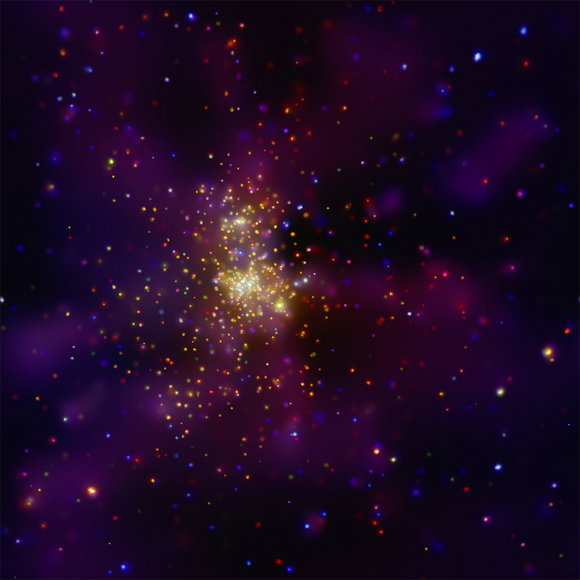This picture is too gorgeous not to share it. A new Chandra X-ray telescope image shows a beautiful, dense region of massive stars in the Centaurus constellation. It almost appears as though someone threw a handful of colored candies out into space. Known as Westerlund 2, this star cluster has been a mysterious region of our galaxy, filled with dust and gas that have obscured our vision of what lies inside. But new X-ray observations with Chandra have revealed some of the hottest, brightest and most massive known stars, and this is now regarded as one of the most interesting star clusters in the Milky Way galaxy.
About 20,000 light years from Earth, Westerlund 2 is a young star cluster with an estimated age of about one or two million years. An extremely massive double star system called WR20a is visible in the image, the bright yellow point just below and to the right of the cluster’s center. This system contains stars with whopping masses of 82 and 83 times that of the Sun. The dense streams of matter steadily ejected by these two massive stars, called stellar winds, collide with each other and produce large amounts of X-ray emissions. But alas, no chocolate candies.
This collision is seen at different angles as the stars orbit around each other every 3.7 days.
Several other bright X-ray sources may also show evidence for collisions between winds in massive binary systems.
The Chandra image of Westerlund 2 shows low energy X-rays in red, intermediate energy X-rays in green and high energy X-rays in blue. This is an area that is incredibly dense with massive stars, and bright with X-rays.
Image is 8.4 arc minutes across and was taken by the Chandra Advanced CCD Imaging Spectrometer, which can study temperature variations from x-ray sources.
Download this image for your desktop here.
Original News Source: Chandra Photo Album


It’s great that such images are presented for their aesthetic value as well as their scientific value.